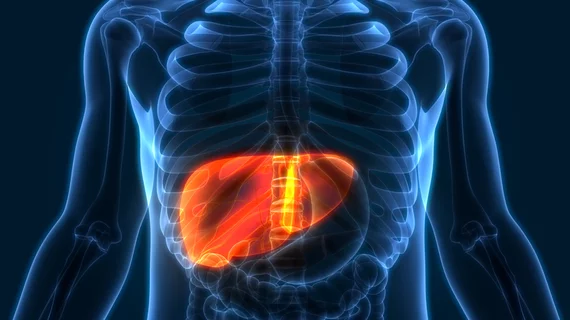AI detects more than half of metastases overlooked by radiologists on CT
Artificial intelligence can detect more than half of liver metastases overlooked by radiologists on contrast-enhanced CT, according to a study published April 7 in the European Journal of Radiology [1].
Early detection of this concern is crucial to improving a patient’s prognosis. However, physicians can occasionally overlook the most common malignant liver tumor, delaying or even losing the opportunity for timely treatment.
Scientists recently set out to see whether adding artificial intelligence could aid radiologists in reducing the number of misses. They’ve found early success, with the software detecting liver metastases in 54% of patients in whom the finding went unnoticed by human readers.
“Our results suggest the potential of AI-powered software in reducing the frequency of overlooked small liver metastases when used in conjunction with the radiologists’ clinical interpretation,” Hirotsugu Nakai, with the Kyoto University Graduate School of Medicine in Japan, and co-authors concluded.
For the analysis, Nakai et al. reviewed the records of nearly 750 patients diagnosed with liver metastases at their institution between 2010-2017. Two expert abdominal radiologists classified cases as either missed by physicians at the time or correctly identified. This resulted in a final sample of about 135 patients, with 68 classified as having overlooked metastases.
Researchers then tasked the AI software with processing those 100-plus images, which it performed successfully. Per-lesion sensitivity across all liver lesion types was 70.1%, while it was 70.8% for metastases, and 55% for those overlooked by radiologists. All told, the AI tool pinpointed metastases at a rate of 92.7% across all cases and 53.7% among overlooked instances. There was an average of about 0.48 false positives per patient, the study authors reported.
Both the software and the radiologists often failed to detect metastases with a smaller size, low contrast and background fatty liver. Reasons for the gap between AI and physicians, the authors noted, could include indications for the examination—with CT scans for concerns unrelated to the liver sometimes resulting in misses. The radiologists’ physical and mental condition at the time, including any fatigue, anxiety or lack of concentration, also could have had an impact.
The software failed to detect 16% of liver metastases that radiologists were able to spot, the authors added, underlining its role as a helper.
“For instance, the software failed to detect liver metastases in contact with large hepatic veins, whereas the radiologists did not; this leads us to believe that lesions surrounded by the liver parenchyma may be easier for the software to detect than those that are not,” Nakai et al. noted. “Therefore, the software would not replace the radiologists; instead, the software should be used in conjunction with the radiologists’ clinical interpretation.”

